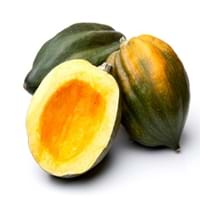Health Benefits
Acidity treatment, Cancer prevention, Good for diabetics, Prevents constipation, Prevents Anaemia
Anti-inflammatory properties, Arthritis treatment, Regulates Blood Sugar
General Benefits
Boosts immune system, Cures fever, Eye care, Fights against infections, Strengthens bones
Boosts immune system, Controls blood sugar levels, Digestive aid
Skin Benefits
Anti-aging benefits, Reduces wrinkles, Skin rejuvenation
Nourishes skin, Protects skin from oxidative stress
Hair Benefits
Protects hair
Prevents hair loss, Promotes longer and healthier hair, Regulates hair growth
Allergy Symptoms
Anaphylaxis, Asthma, Breathing difficulty, Coughing, Drop in blood pressure, Hives, Skin rash, Stuffy nose, Swelling of mouth, tongue or lips, Wheezing
Asthma, Red rash, Swelling of mouth, tongue or lips
Side Effects
Allergic reaction
Diarrhoea, Vomiting
Lactating Women
Not Available
Yes
Best Time to Eat
Any time except an hour after meal
Along with meal, As a snack in the late afternoon, Don't eat after meal, Eat the fresh ones, avoid mixing with any other foods, don't eat after meal.
Vitamin B5 (Pantothenic Acid)
Vitamin C (Ascorbic Acid)
Vitamin E (Tocopherole)
Not Available
Vitamin K (Phyllochinone)
Not Available
Lutein+Zeaxanthin
Not Available
Calories in Fresh Fruit with Peel
Calories in Fresh Fruit without Peel
Not Available
Not Available
Calories in Frozen Form
Not Available
Calories in Dried Form
Not Available
Calories in Canned Form
Not Available
Season
All seasons
Winter
Varieties
Dark raisins, White or golden raisins, Sultanas and Currants
Bush Table Queen, Heirloom Table Queen, Festival Hybrid, Early Acorn Hybrid, Table Ace, Ebony and Cream of the Crop
Seedless Variety
Not Available
No
Color
Black, Blue, Green, Purple, Yellow
Dark green, Green-yellow, Orange green
Inside Color
Brown
Yellow
Origin
Central Europe, Western Asia
Central America, North America, Unknown
Grows on
Not Available
Vines
Soil Type
Clay loam, Sandy loam
Well-drained
Climatic Conditions
Warm
Cold, Sunny
Facts about
- 30th April is known as National Raisin Day.
- Fresno, California is known as raisin capital of the world.
- Half of world's raisin supply is produced in California.
- It was named as Acorn Squash for its resemblance to a large ribbed acorn.
- It is said that squash was being grown in Mexico as long as 10,000 years ago.
- It was the first food cultivated by native American Indians.
Top Producer
United States of America
China
Other Countries
Afghanistan, Argentina, Australia, Chile, China, Iran, South Africa, Turkey, Uzbekistan
Egypt, India, Iran, Italy, Mexico, Russia, Turkey, Ukraine, United States of America
Top Importer
Europe
Costa Rica
Top Exporter
Turkey
United States of America
Botanical Name
Vitis Vinifera
Cucurbita Pepo
Synonym
Not Available
Winter Squash
Subkingdom
Tracheobionta
Tracheobionta
Division
Magnoliophyta
Magnoliophyta
Class
Magnoliopsida
Magnoliopsida
Subclass
Not Available
Dillenhidae
Order
Vitales
Cucurbitales
Family
Vitaceae
Cucurbitaceae
Species
Vitis vinifera
Pepo
Generic Group
Grape
Not Available
Difference Between Raisin and Acorn squash
We might think that Raisin and Acorn squash are similar with respect to nutritional value and health benefits. But the nutrient content of both fruits is different. Raisin and Acorn squash Facts such as their taste, shape, color, and size are also distinct. The difference between Raisin and Acorn squash is explained here.
The amount of calories in 100 gm of fresh Raisin and Acorn squash with peel is 299.00 kcal and 40.00 kcal and the amount of calories without peel is Not Available and Not Available respectively. Thus, Raisin and Acorn squash belong to High Calorie Fruits and Low Calorie Fruits category.These fruits might or might not differ with respect to their scientific classification. The order of Raisin and Acorn squash is Vitales and Cucurbitales respectively. Raisin belongs to Vitaceae family and Acorn squash belongs to Cucurbitaceae family. Raisin belongs to Vitis genus of Vitis vinifera species and Acorn squash belongs to Cucurbita genus of Pepo species. Beings plants, both fruits belong to Plantae Kingdom.









